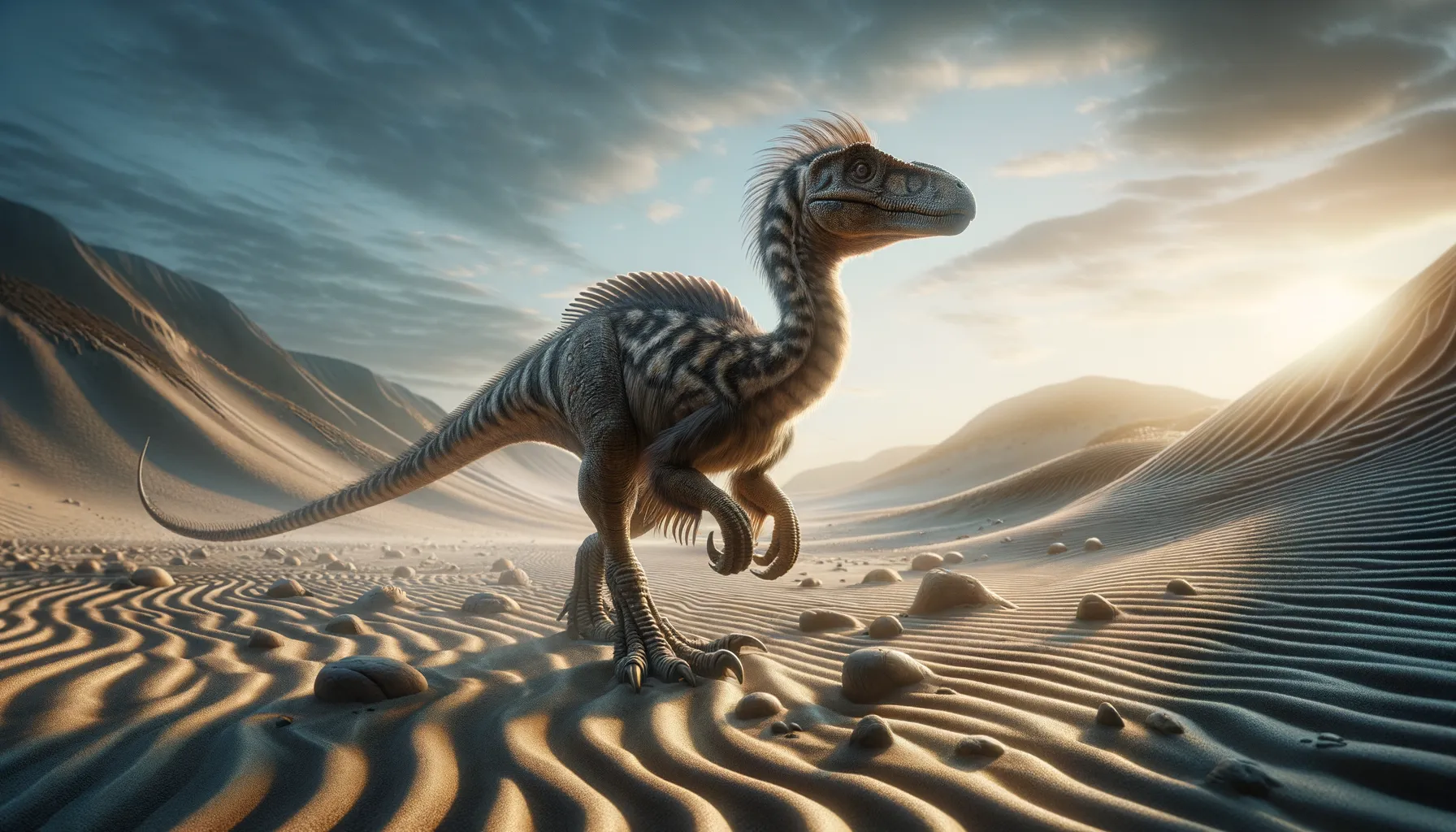
Linhenykus
One claw, endless possibilities!
Period
Cretaceous
Length
Measured around 1 meter (3.3 feet) long.
Height
Stood about 0.3 meters (1 foot) tall.
Weight
Approximately 1 kg (2.2 lbs).
Linhenykus was a small, nimble dinosaur that lived in the Late Cretaceous period. Recognized as a theropod, it had a distinct single claw on its hands. This unique feature suggests specialized use, possibly for digging or foraging. Linhenykus, a member of the alvarezsaurids, was notable for its tiny size, resembling more modern birds than its larger theropod relatives. Its fossils provide insight into the diversity of life during the age of dinosaurs.
Diet
Linhenykus was likely an insectivore, feeding mainly on insects. Its single claw suggests it dug into nests or burrows to capture prey.
Hunting
Linhenykus probably hunted by foraging through the brush or digging into soft ground. Its small size and agility made it well-suited to chasing after or ambushing fast-moving insects.
Environmental challenges
Living in the Late Cretaceous, Linhenykus faced shifting climates and landscapes. It adapted to environments that could range from dry to moderately humid. Its specialized feeding habits allowed it to survive in areas where other food sources were scarce.
Speed
Linhenykus was relatively fast for its size.
Lifespan
It likely lived for several years, similar to small birds.
First discovery
Discovered in Inner Mongolia, China in 2008.
Fun Facts
- Linhenykus was one of the smallest dinosaurs, about the size of a chicken.
- It lived around 84 to 75 million years ago during the late Cretaceous period.
- Linhenykus is known for having only one functional finger on each hand, which is quite unusual for dinosaurs.
- This dinosaur was a theropod, the same group that contains the mighty Tyrannosaurus rex.
- Linhenykus likely used its single finger for digging or foraging for insects.
- The fossils of Linhenykus were discovered in Inner Mongolia, China.
- Despite its small size, Linhenykus was likely a fast runner, helping it escape predators.
Growth and Development
Linhenykus likely developed quickly from hatching to adulthood, much like modern birds. Rapid growth would have been essential to avoid predation. Bone studies suggest they matured early and sustained their size throughout adulthood.
Habitat
Linhenykus lived in a semi-arid environment with scattered vegetation. Its habitat likely featured open spaces interspersed with patches of forest or shrubland. Such an environment supported a wide range of small vertebrates and insects, which were integral to its diet.
Interaction with other species
Linhenykus may have coexisted with other small theropods, competing for similar food sources. Its small size and specialized diet would reduce direct competition with larger carnivorous dinosaurs. Fossil evidence indicates a biodiversity of species living in close proximity during its era.
Natural lifespan
Linhenykus likely lived to an age reflective of similar-sized mammals or birds.
Reproduction
Like other theropods, Linhenykus probably laid eggs. Its nesting behavior would be comparable to modern birds, likely involving carefully chosen sites to protect its offspring. Parental care may have been present to safeguard young Linhenykus.
Social behaviour
Linhenykus may have exhibited some level of social behavior, possibly hunting in small groups. Cooperative behavior could confer advantages in foraging for insects. Nevertheless, evidence on its social interactions remains limited.
Fossil locations
Fossils of Linhenykus were primarily found in the Wulansuhai Formation in Inner Mongolia, China. The region has yielded rich dinosaur finds, offering insights into the ecosystem of the Late Cretaceous period. Continued excavations in this area hold promise for further discoveries of Linhenykus and related species.
